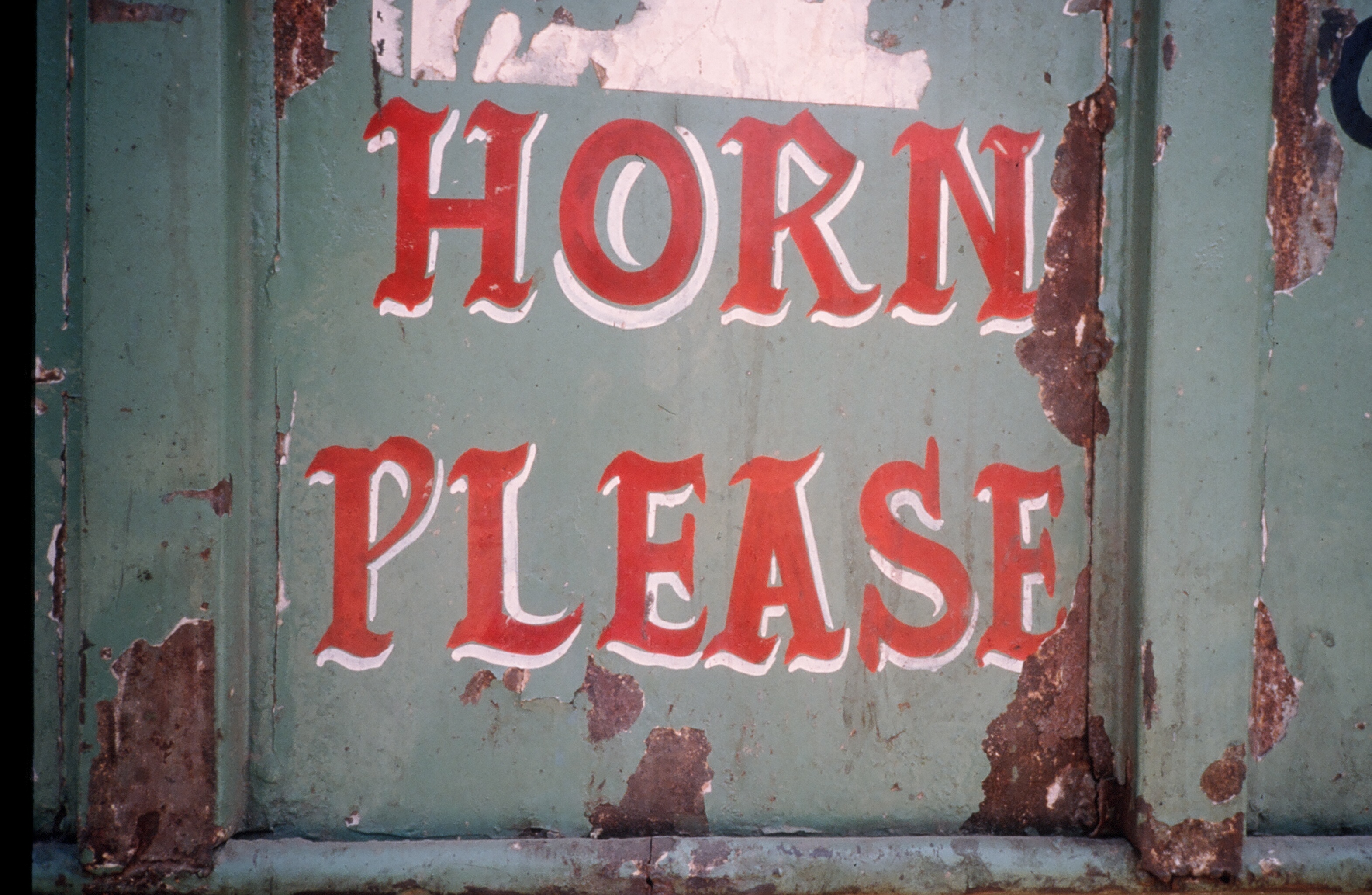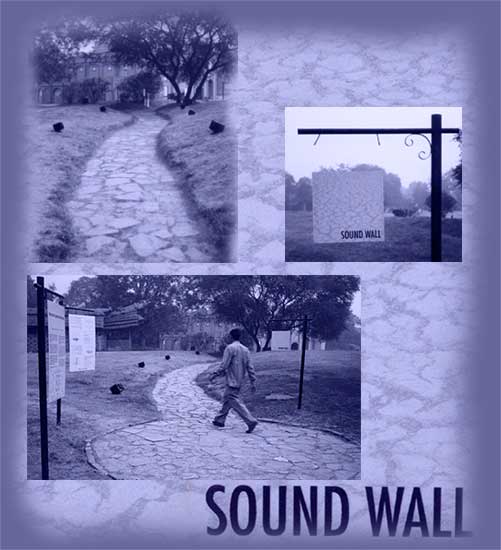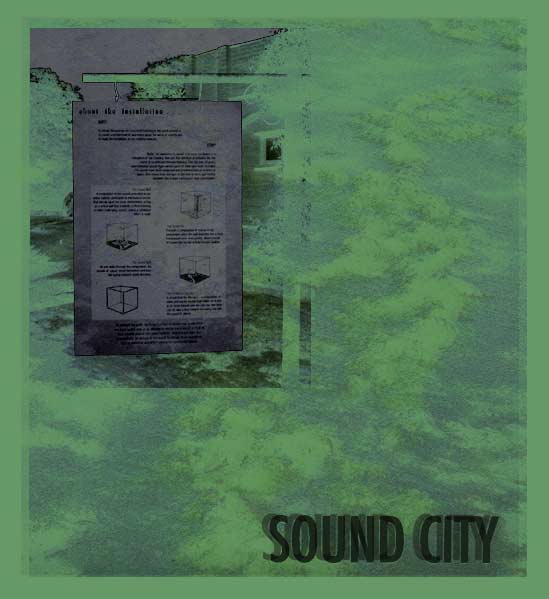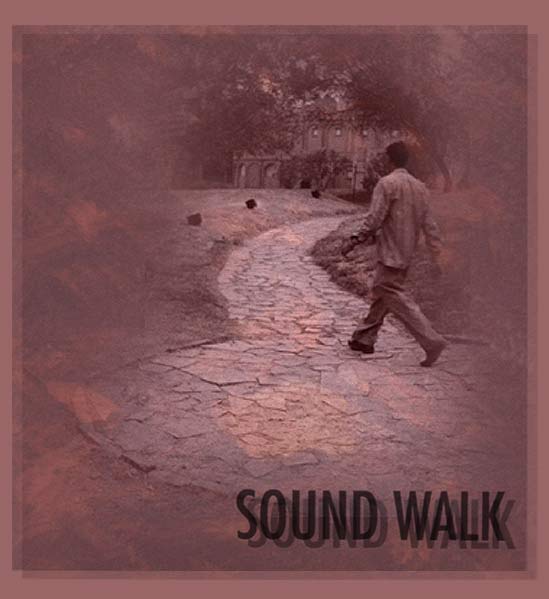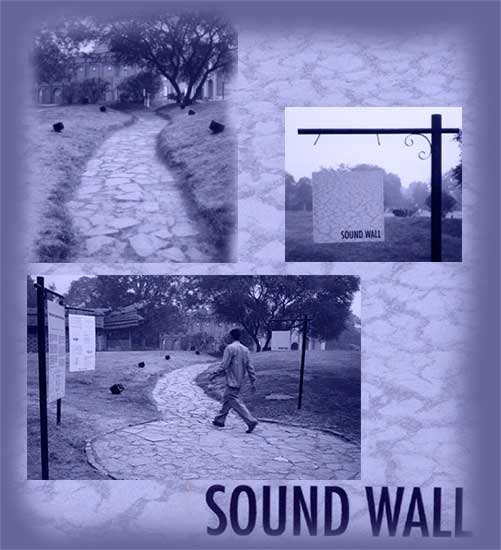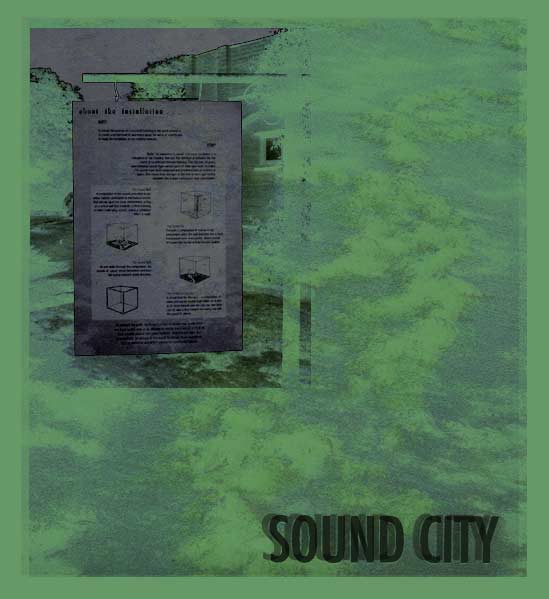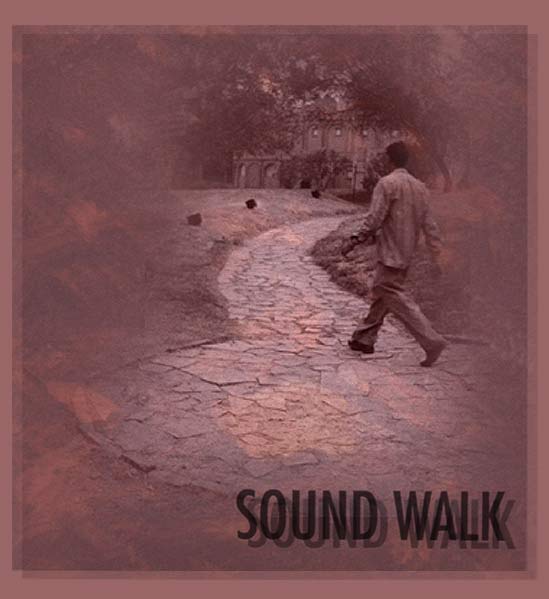Welcome to the Sound Wall
A cube - six planes enclosing and defining a space within.
Besides this what else?
Nothing - would be an obvious response of a society as
visually oriented as ours.
What if you close your eyes and listen carefully, with your ears.
What do you hear?
The experience is that of an innate quality of space -
a quality that is missing in our present day life:
SILENCE.

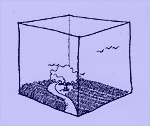
Going further, let us attribute a particular quality to the space
Imagine it to be a grassland with a tree & a brook meandering through it.
How do the sounds change?
The wind rushing through the grass,
the grass rustling in response.
The birds lounging around upon the tree - chirping
The sound of water, as it ambles along and
even some birds flying overhead.
A weary traveler, reposing under its cool shade.
Now imagine, that this traveler decides to settle down and builds a house for himself.
Sounds of human habitation are introduced -
working, playing, talking or even screaming.
At times the human sounds tend to dominate while at other times the sounds of water, wind and birds overpower.
But the sounds are still natural and they still harmonize and blend with each other.
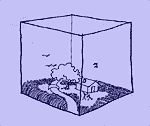
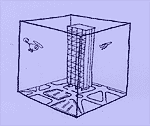
Ten years later the house has been demolished,
the tree cut down and an apartment building stands there instead.
Deluged with a road network around it.
For the first time
Unnatural sounds are introduced.
Cars, trucks, buses, jack-hammers.
Washing machines, water pumps, generators.
and airplanes (not birds flying over-head)
Welcome to the Industrial Age.

A cube - six planes enclosing and defining a space within.
Besides this what else?
Nothing - would be an obvious response of a society as
visually oriented as ours.
What if you close your eyes and listen carefully, with your ears.
What do you hear?
The experience is that of an innate quality of space -
a quality that is missing in our present day life:
SILENCE.
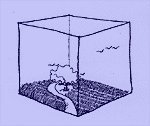
Going further, let us attribute a particular quality to the space
Imagine it to be a grassland with a tree & a brook meandering through it.
How do the sounds change?
The wind rushing through the grass,
the grass rustling in response.
The birds lounging around upon the tree - chirping
The sound of water, as it ambles along and
even some birds flying overhead.
A weary traveler, reposing under its cool shade.
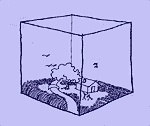
Now imagine, that this traveler decides to settle down and builds a house for himself.
Sounds of human habitation are introduced -
working, playing, talking or even screaming.
At times the human sounds tend to dominate while at other times the sounds of water, wind and birds overpower.
But the sounds are still natural and they still harmonize and blend with each other.
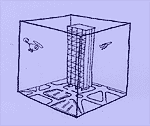
Ten years later the house has been demolished,
the tree cut down and an apartment building stands there instead.
Deluged with a road network around it.
For the first time
Unnatural sounds are introduced.
Cars, trucks, buses, jack-hammers.
Washing machines, water pumps, generators.
and airplanes (not birds flying over-head)
Welcome to the Industrial Age.
About Noise
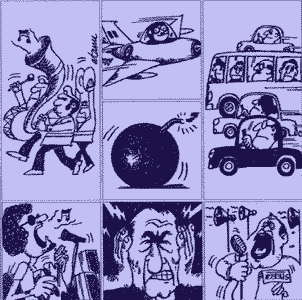
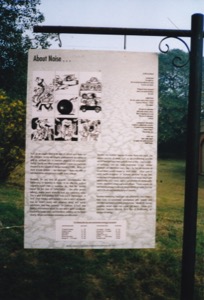
Do we love noise?
Certainly not!
You might say.
But I am afraid you would have to shout
To convey your doubt.
Perhaps its time to introspect
Listen to our world and dissect
The truth.
HORN PLEASE
Our cars, scooters, trucks and buses request
To get out of the way - PLEASE
They suggest.
We mark our celebrations
With bombs and firecrackers
With no beginning and no end
What are we celebrating?
I contend.
Loudspeakers & Microphones
invade our neighborhoods, everyday.
To 'protect' us from the deafening
sound of silence.
They perhaps say.
Surely I jest
Some might suggest
To register your doubt and protest
HORN PLEASE.
Just as we require time to be able to refresh and renew our life energies, so too we require quiet periods for mental as well as spiritual, not to mention physical, re-composure. Today, hardly any silent zones remain - even our parks are invaded by the sounds of the surrounding traffic. While our most private domain - our bedroom - does not offer us sanctum either, deluged as it is with sonic sewage.
Normally, for any kind of accoustic communication like conversing or listening to music, to be effective, a good 'signal to noise' ratio is essential. So that the 'desired signal' (in the case of conversation - the other person talking), may be heard distinctly from any competing noise. This is what distinguishes a 'hi-fi' from a 'low-fi' environment. A 'hi-fi' (high fidelity) environment is one in which all sounds may be heard clearly with whatever detail and spatial orientation they may posess. In contrast, a 'low-fi' (low-fidelity) environment would be one where quiet sounds are masked by louder ones and therefore, nothing can be heard clearly, details and spatial orientation are obscured.
Besides the outdoor sources of noise there also exist the indoor sources of noise, such as air-conditioning systems which have perhaps been aptly termed as the - bad breath - of buildings. And yet noise treatments in our interior environs are attempted every day by the introduction of broad-band sounds known as 'white noise'. Other uses of such 'audio - analgesia' or 'acoustic perfume', in our lives today, may be frequently found in the form of music heard over telephones, rock music and/or symphonies in restaurants, hotels, elevators, shops and even offices. These sounds do not help in any way to alleviate the problem of noise, but only add to the already existing dump of sounds.
Another interesting 'deaf spot' still adhered to even today is that noise is considered synonymous with 'power' and therefore accepted as being progressive. Ideally of course, progress would mean less noise not more: noise in a machine, however discrete, is a sign of in-efficiency, an escape of energy.
The Decibel (dB)
The dBA scale measures what the human ear hears. The dBC scale, measures the low frequencies in our environment, which are found mostly in sounds of transpotation, air conditioning, and many types of other machinery. Our ears do not perceive them as being very loud, so we tend not to notice them. But we can FEEL the vibrations of these frequencies in our bodies. Have you ever stood beside a road and felt a passing truck "rattle" your stomach?
If you switch between the dBA and dBC scale on this meter, you will see that the dBC measurement is higher. A 10dB difference is normal and acceptable between the two types of measurements. In many situations, however, the dBC readings are 20-30 dB higher. This is not normal and indicates that our bodies have to put up with a lot of low frequency vibrations. It creates additional stress and, in extreme cases, can cause drowsiness or nausea.
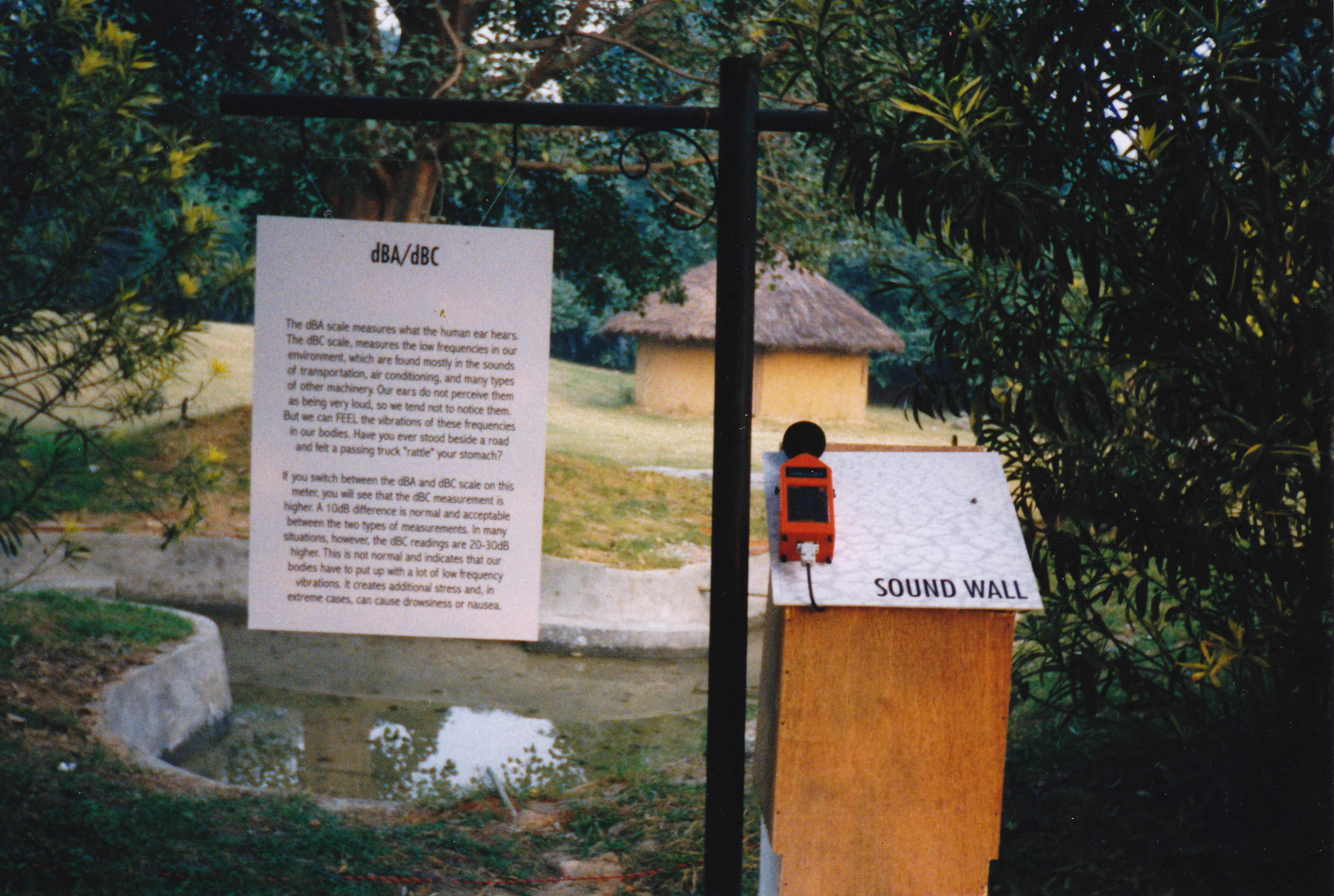
|
environmental sounds |
sound levels |
|
Threshold of hearing |
0 dB |
|
Rustling of leaves |
20 dB |
|
Quiet whisper |
30 dB |
|
Quiet home |
40 dB |
|
Normal conversation |
60 dB |
|
Average car (15 ft away) |
70 dB |
|
Loud singing (3 ft away) |
75 dB |
|
Average truck (15 ft away) |
80 db |
|
Power mower |
107 dB |
|
Amplified rock-n-roll |
120 dB |
|
Jet plane (100 ft away) |
130 dB |
|
Threshold of pain |
140 dB |
Horn Please
Waking up in Delhi on the first morning, I hear nothing but car horns. I laugh in disbelief. Why are they honking their horns so much? When I try to cross the street later, I think I understand: the traffic is in a state of complete chaos. Everyone seems to move in all directions at the same time, no one ever stops or waits, everyone keeps moving. Finding the empty spaces wherever they happen to be, moving around each other, around cows, horse carts, bicycles, pedestrians. And everyone honks. HORN PLEASE! it says on many trucks and autorickshaws.
I realize quickly that car horns speak differently here. They rarely shout: Get-out-of-the-way. They talk: Hello, Watch out, I'm beside you, Leave me some room, I want to move over to your side, Don't bump into me or Hello I want to pass. What seemed like a chaos initially, starts to feel like an organic flow, like water. "There is an under current of rules", says my Veena.
An old bent-over man crosses the street. No one stops for him....The honking traffic curves its way around the silent body. Lost in the loud current, I watch in amazement...
Sound Journal Hildegard Westerkamp
